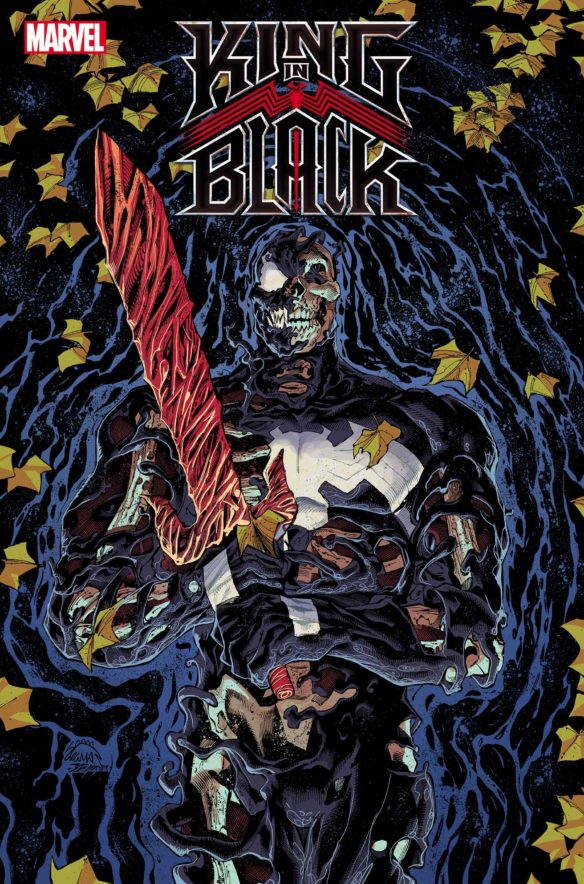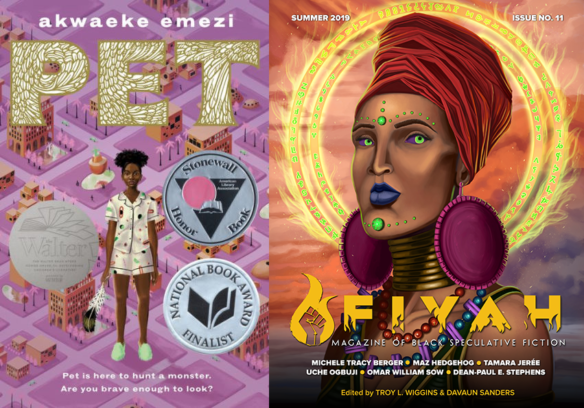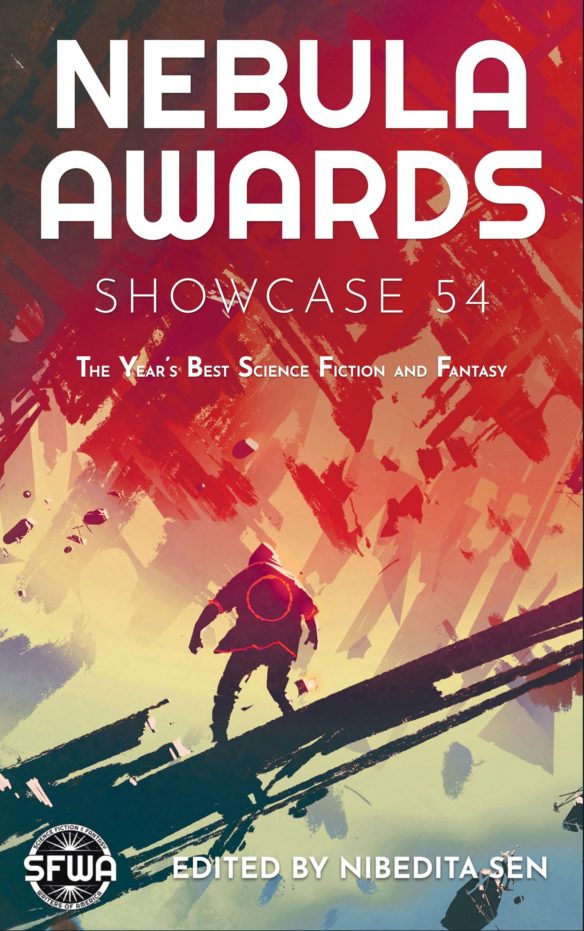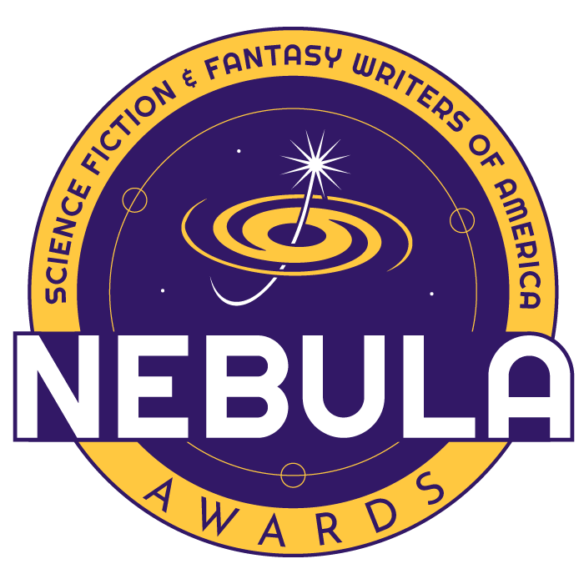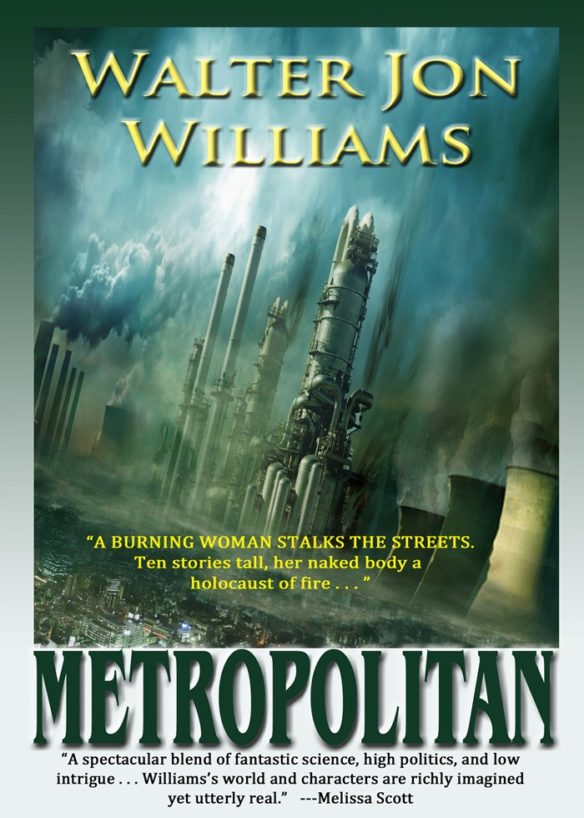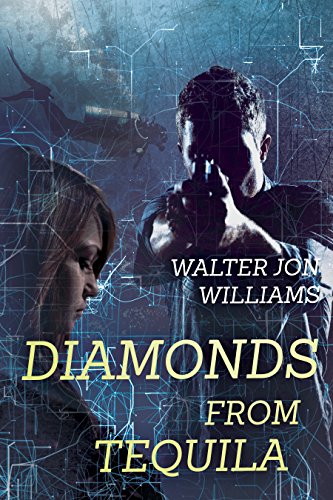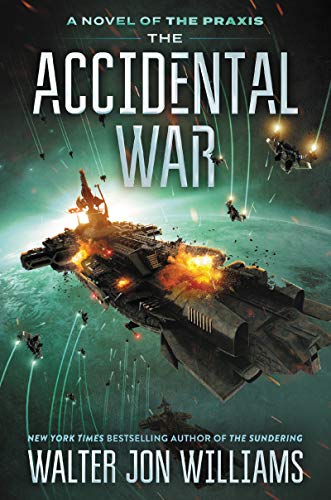(1) THE FUTURE THROUGH YESTERDAY. Nicholas Whyte has put together a video of “The world in 2021, according to science fiction” and started a YouTube channel to host it. At the link is his impressive list of sources.
I’ve spent several weekends working on a presentation of twentieth-century science fiction set in the year 2021, and here is the fruit of my labours, a 21-minute video.
(2) BEEP BEEP, BEEP BEEP. Phil Plait, in a “Bad Astronomy” entry at SYFY Wire, reports that “Alien hunters detect a signal from Proxima Centauri, the closest star, but it’s likely human in origin”.
…A standard radio astronomy technique to make sure that what you see is coming from the object you’re observing is to move the telescope back and forth a bit to point to a different part of the sky and see if the signal persists (perhaps leaking into the dish from a source nearby); this is called “nodding” because it’s like a head nodding. When they did this, the signal went away, then came back when they repointed at Proxima.
So it appears to be coming from the star, or at least form very nearby it in the sky. It also appears to have a very narrow frequency range. Not only that, but another characteristic you might expect from an intelligent signal is that, over time, the frequency itself will shift a bit — if aliens are transmitting from a planetary surface, as that planet rotates it causes a Doppler shift in the signal. A shift was seen in the signal, which is interesting….
(3) GOTHIC YEAR. Molly Odintz’ choices of “The Best Gothic Fiction of 2020” for CrimeReads is full of familiar names, including —
Sam J. Miller, The Blade Between (Ecco)
2020 brought a plethora of new additions to the gentrification noir canon, but Sam J. Miller’s The Blade Between stands out for its heroes’ plan to raise sinister supernatural forces in defense of their city. Ever since H.P. Lovecraft first drew attention to the plight of New England architecture by filling his fictional decaying homes with hideous monstrosities, Gothic fiction has been a surprisingly partisan force for housing preservation (Jane Eyre and Rebecca notwithstanding). In The Blade Between, the relationship reaches its zenith, as a photographer and his two childhood besties attempt to save their beloved city of Hudson from corporations and yuppies, only to find themselves instead awakening an ancient force bent on vengeance. Also, since this is Sam Miller, be warned: there will be whales.
(4) STANDARD BEARER. Sean T. Collins shows how popular culture has connected The Stand with newsmaking crises over the years: “‘The Stand’: Tracing the Stephen King Epic Through Its Many Mutations” in the New York Times.
Take a pandemic. Add the paranormal. Make it a uniquely American story of survival horror. The result: “The Stand,” Stephen King’s epic post-apocalyptic novel from 1978, a new mini-series adaptation of which debuted Thursday on CBS All Access.
Conceived in the pre-Covid era, the show has taken on new resonance since, telling the story of a weaponized virus that wipes out 99 percent of the population. But that’s only the beginning. The real battle happens afterward as supernatural forces of darkness and light — embodied by the demonic dictator Randall Flagg (Alexander Skarsgard) and the holy woman Mother Abagail (Whoopi Goldberg) — duel for the souls of the plague’s survivors.
Since the original novel’s original release, King’s saga has entered the pop-culture consciousness in many different incarnations, including an expanded edition of the book and an earlier mini-series adaptation. In anticipation of the show’s arrival, we’re tracing the story from its point of origin to its latest mutation.
The Allegory
The opening act of King’s novel is an eerily plausible account of the complete collapse of human society after the “Captain Trips” superflu is unleashed upon the world. That aspect has found relevance across the decades since the novel’s publication, in the Cold War nuclear arms race, through the peak of the AIDS epidemic in the United States, to the events of 2020.
But that’s only the first part. Flagg is presented as an even worse plague upon the living — a grinning dictator who builds a new society based on human drivers like greed, pride, lust and wrath and who exploits the virus for the sake of his own power. Are there lessons to be applied in the real world? Successive generations have thought so….
(5) DOWN MEMORY LANE.
- 1953 — At the 11th Worldcon in 1953, Alfred Bester’s The Demolished Man wins the very first Hugo for Best Novel. It had been published in Galaxy in January, February and March of the previous year. It would also be nominated for the International Fantasy Award, an award that would exist only in the Fifties. This would be the only Hugo that Bester would win though he would be awarded a SFWA Grand Master Award and Prometheus Hall of Fame Award for The Stars My Destination. It, like most of his works, is available from the usual digital suspects.
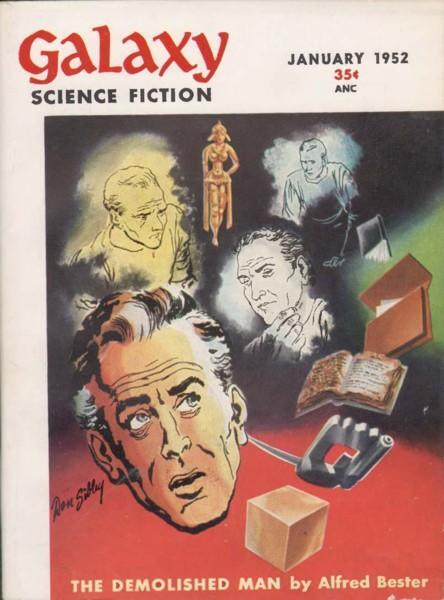
(6) TODAY’S BIRTHDAYS.
[Compiled by Cat Eldridge and John Hertz.]
- Born December 19, 1897 – Lucia Trent. Book reviewer for The Nation. President of the Western Poets’ Congress. Called the best woman reader of poetry. Got a poem into Fire and Sleet and Candlelight (A. Derleth ed. 1961). Seven books of them, some with husband Ralph Cheyney. (Died 1977) [JH]
- Born December 19, 1902 — Sir Ralph Richardson. God in Time Bandits but also Earl of Greystoke in Greystoke: The Legend of Tarzan, Lord of the Apes and Chief Rabbit in Watership Down. Also the Head Librarian in Rollerball which I’ll admit I’ve never seen. And a caterpillar in Alice’s Adventures in Wonderland. And Satan in the Tales from the Crypt film. Oh, my he had an interesting genre film career! (Died 1983.) (CE)
- Born December 19, 1922 – Harry Warner, Jr. Two indispensable books of fanhistory, All Our Yesterdays (fandom in the 1940s) and A Wealth of Fable (1950s). Quite possibly the best letters-of-comment author we’ve ever known; it seemed he read and wrote to every fanzine, his letters were short and they were good. Three Hugos, four FAAn (Fan Activity Achievement) Awards. Fan Guest of Honor at Noreascon I the 29th Worldcon. Big Heart (our highest service award). His own fanzines Horizons, Spaceways. First Fandom Hall of Fame. More here. (Died 2003) [JH]
- Born December 19, 1949 – Lee Pelton. Active in Minn-stf and Minneapa. Co-edited Rune with Carol Kennedy. Often head of film program at Minicon. Younger brother played baseball with John Purcell, as a result of which Purcell went Askew. (Died 1994) [JH]
- Born December 19, 1952 — Linda Woolverton, 68. She’s the first woman to have written a Disney animated feature, Beauty and the Beast, which was the first animated film ever to be nominated for Best Picture at the Academy Awards. She also co-wrote The Lion King screenplay (along with Irene Mecchi and Jonathan Roberts). (CE)
- Born December 19, 1958 – Laura Whitcomb, age 62. Three novels for us. Won three Kay Snow awards, later served a term as a judge. Sings madrigals. [JH]
- Born December 19, 1960 — Dave Hutchinson, 60. Best known for his Fractured Europe series which won a BSFA Award for the third novel, Europe in Winter. Europe at Midnight was a finalist for the John W. Campbell Memorial Award. I’ve listened to the entire series and it’s quite fascinating. He’s got a lot of other genre fiction as well but I’ve not delved into any of those yet. (CE)
- Born December 19, 1961 — Matthew Waterhouse, 59. He’s best known as Adric, companion to the Fourth and Fifth Doctors. He was the youngest actor in that role at the time. And yes, he too shows up in The Five(ish) Doctors Reboot. (CE)
- Born December 19, 1970 – Tanigawa Nagaru, age 50. (Personal name last, Japanese style.) Famous for a dozen light novels about Suzumiya Haruhi, which earned TN the grand prize at the 8th Sneaker Awards and became television and film animé, video games, manga, audio dramas, and original Net animation. I’ll actually refer you to the SF Encyclopedia. [JH]
- Born December 19, 1972 — Alyssa Milano, 48. Phoebe Halliwell in the long running original Charmed series. Other genre appearances include on Outer Limits, the second Fantasy Island series, Embrace of the Vampire, Double Dragon, the Young Justice animated series as the voice of Poison Ivy and more voice work in DC’s The Spectre excellent animated short as a spoiled rich young thing with a murderous vent who comes to a most fitting end. (CE)
- Born December 19, 1975 – Brandon Sanderson, age 45. Thirty novels, three dozen shorter stories. Concluded Robert Jordan’s Wheel of Time. Proposed a theory of hard and soft magic. Two Hugos, one being for a season of Writing Excuses podcast (with Kowal, Tayler, Wells, J. Sanderson). Fifteen NY Times Best-Sellers. A Geffen last year. Interviewed in Fantasy, Lightspeed, Space and Time, SuperSonic. Launched by Hambly’s Dragonsbane. [JH]
- Born December 19, 1979 — Robin Sloan, 41. Author of Mr. Penumbra’s 24-Hour Bookstore which definitely has fantasy elements in it and is a damn fine read. His second novel which he sent me to consider reviewing, Sourdough or, Lois and Her Adventures in the Underground Market, is also probably genre adjacent but is also weirdly about food as well. And he’s a really nice person. (CE)
(7) COMICS SECTION.
- Moderately Confused shows a Dickens Christmas 2020-style.
(8) COME TO PAPA. Literary Hub’s Robert K. Elder contemplates “Why Ernest Hemingway Makes a Great Subject for Comic Book Artists”).Michael Toman surmises, “He was also one of Harlan Ellison’s favorite authors, as shown by HE’s naming of his ‘Kilimanjaro Corporation.’” (Could Ellison also have been paying a homage to Bradbury’s 1965 story with a Hemingway connection?)
…Celebrity appearances aren’t new to comic books. Both Stephen Colbert and President Barack Obama got guest shots with Spider-Man, and Eminem got a two-issue series with the Punisher. Orson Welles helped Superman foil a Martian invasion, and President John F. Kennedy helped the Man of Steel keep his secret identity. Even David Letterman got a studio visit from the Avengers. But, using the crowd-sourced Comic Book Database and my own research, I’ve discovered that Hemingway by far exceeds other authors in number of appearances (Shakespeare: 22, Mark Twain: 13). As historical figures go, only Abraham Lincoln comes close to touching him, with roughly 122 appearances in comics (and counting).
(9) BATWHEELS. [Item by Martin Morse Wooster.] Batman/The Batmobile on YouTube is a 2012 documentary, directed by Roko Belic, all about the Batmobile. Although Batman always had a car, the Batmobile was really invented by George Barris for the 1966 TV series, Barris was interviewed for the documentary, and discussed how he bought a Ford Futura concept car and turned it into the Batmobile Adam West drove. West is also interviewed, as is Christian Bale, Tim Burton, Joel Schumacher, and Christopher Nolan. But the film is really for people who (like me) enjoy watching car designers talk about their work. This film is pretty geeky but worth an hour.
Fun fact: H.R. Giger was hired to design a Batmobile for BATMAN FOREVER but the car he drew looked like “a tarantula with four legs” and was unfilmable.
(10) PERSONAL PORTAL. Unmapped Chronicles series author Abi Elphinstone tells Guardian readers “I found my own Narnia behind a blue door in Scotland”.
…As a child, I watched salmon leap from the brilliantly named fishing pools beyond the blue door (Kitbog, Witch’s, Badger) and played hide-and-seek inside Doulie Tower (a folly built around 1780, when Lord Adam Gordon, commander-in-chief of the army in Scotland, acquired the estate and turned it from “the wildest state of barrenness” into woods filled with Scots pines, oaks, rowans and silver birches). I watched dippers gliding through the Rocks of Solitude (a picturesque narrow stretch of the North Esk) and I listened to my father’s stories about trolls who lived beneath the gnarled roots of beech trees. It felt impossible that all this should exist on the other side of that little blue door, yet it did.
(11) IN THE TWENTY-FOURTH-AND-A-HALF CENTURY. “Legendary’s BUCK ROGERS Sci-Fi Series Will Be Written by Brian K. Vaughan” reports GeekTyrant.
Comic book and TV writer Brian K. Vaughan has been hired to write Legendary’s television series adaptation of classic pulp hero Buck Rogers. Vaughan has worked on a ton of projects over the years, and he seems like a solid choice to take on the material. Some of his previous TV projects include Lost, Under the Dome, Y: The Last Man, Runaways, and more.
(12) THE TWELVE DAYS OF 770. Applause to Bruce D, Arthurs for his seasonal parody (left as a comment.)
Because I was avoiding stuff I should actually be working on this morning, I produced the following instead:
On the twelfth day of Christmas
My bookstore shipped to me
All twelve Maradaine books,
Eleven Pipers viking,
Ten Leibers mousing,
Nine Gideons boning,
Eight Correias shooting
Seven Besters jaunting,
Six Star Trek tie-ins,
F-i-i-i-i-ve Mu-r-r-r-de-r-r-r-r-bots!,
Four Asimovs,
Three Jules Verne,
Two Turtledoves,And a one-volume Lord of the Rings!
(13) VIDEO OF THE DAY. Kaya Torres is circling a black hole in a pod, with no one coming, no one to help. She’s Alone. Mind Matters adds —
…As Torres is “marooned on my lifepod” as the only survivor of the DSV Intrepid, she is able to contact an “interstellar penpal” to keep her company via occasional messages until her food runs out and she dies. Unless…
[Thanks to Cat Eldridge, JJ, John Hertz, John King Tarpinian, Michael Toman, Martin Morse Wooster, Mike Kennedy, Nicholas Whyte, and Andrew Porter for some of these stories. Title credit goes to File 770 contributing editor of the day Andrew (not Werdna).]






